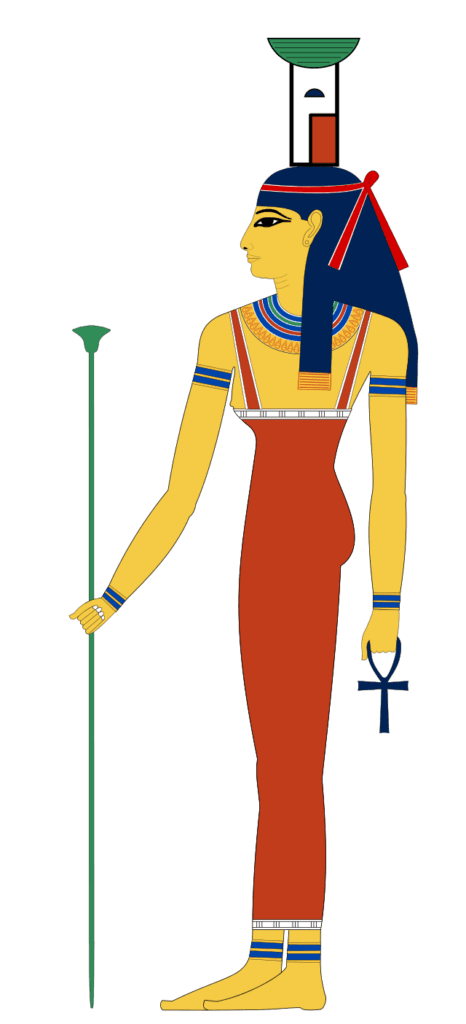
Goddess of Protection and Mourning Nephthys
Nephthys is one of the most intriguing goddesses in ancient Egyptian mythology. Often overshadowed by her more famous sister, Isis, Nephthys played a crucial role in the Egyptian pantheon. She was the goddess of mourning, protection, and the afterlife, offering guidance to souls on their journey beyond death.
Who Is Nephthys?
Nephthys, also known as Nebet-Het, was the daughter of Geb, the god of the earth, and Nut, the goddess of the sky. She was the sister of Isis, Osiris, and Set. Unlike Isis, who represented life and magic, She symbolized the hidden, mysterious aspects of existence. She was often associated with darkness, death, and the transition between worlds.
Despite her connection to mourning, Nephthys was also a protective deity. She stood by the deceased, guiding them to the afterlife. Alongside Isis, she helped restore Osiris after he was murdered by Set, highlighting her nurturing and healing nature.
Nephthys’ Role in Egyptian Mythology
She played a significant role in Egyptian funerary practices. As a protective goddess, she was frequently depicted on coffins and tomb walls, ensuring the safe passage of souls. She was also considered the mother of Anubis, the god of mummification, further strengthening her ties to death and the afterlife.
Additionally, she had an essential role in the story of Osiris. After Set betrayed and killed Osiris, she mourned with Isis and helped gather his remains. Their combined efforts allowed Osiris to be resurrected, reinforcing Nephthys’ importance in rebirth and protection.
Symbols and Depictions of Nephthys
Nephthys is often depicted as a woman wearing a headdress with hieroglyphs representing her name. She sometimes has wings, symbolizing her role as a protector of the dead. In artwork, she is frequently shown standing beside Isis, both goddesses extending their arms in a gesture of protection and blessing.
Her association with the desert also reflects her connection to the unknown and the afterlife. While Isis was linked to fertile lands and life, Nephthys was tied to barren landscapes and the mysteries beyond death.
Worship and Influence
Although Nephthys did not have as many temples dedicated to her as Isis, she was still widely revered. Priests invoked her during funerary rituals, and she appeared in many tombs to guide the deceased. Even today, she remains a symbol of protection, mourning, and transition.
Nephthys’ influence extends beyond Egyptian mythology. Modern spiritual practices often recognize her as a goddess of transformation and hidden knowledge. Her story continues to inspire those who seek guidance during times of change and uncertainty.
How to Work with Nephthys
For those who wish to connect with Nephthys, there are several ways to honour and work with her:
- Altars and Offerings – Create a sacred space with offerings such as water, dark-coloured candles, myrrh incense, or images of wings and hieroglyphs associated with her.
- Meditation and Invocation – Call upon her during meditation to seek guidance during times of transition or grief.
- Shadow Work and Transformation – Nephthys is associated with the hidden and unseen aspects of life. Working with her can aid in personal transformation, shadow work, and acceptance of endings and new beginnings.
- Funerary and Ancestral Work – Since she is a protector of the dead, honoring ancestors and engaging in rituals of remembrance can deepen your connection with her.
- Dream and Intuition Work – Keep a dream journal and pay attention to messages from the subconscious, as Nephthys is linked to mystical knowledge and the unseen world.
Conclusion
Nephthys may not be as well-known as Isis or Osiris, but her role in Egyptian mythology is vital. As a guardian of the dead and a symbol of transition, she embodies mystery, protection, and renewal. By working with her through meditation, offerings, and ancestral connections, one can embrace transformation and guidance during life’s uncertain moments. Her legacy endures, reminding us of the balance between life and death and the unseen forces that guide us.

